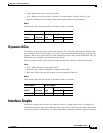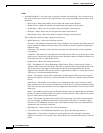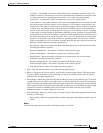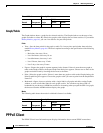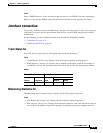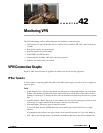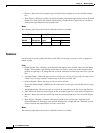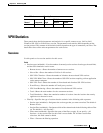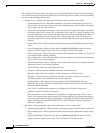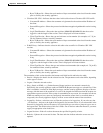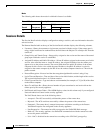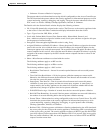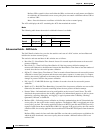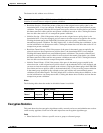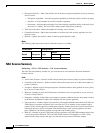
42-3
Cisco ASDM User Guide
OL-16647-01
Chapter 42 Monitoring VPN
VPN Statistics
VPN Statistics
These panels show detailed parameters and statistics for a specific remote-access, LAN-to-LAN,
Clientless SSL VPN, or E-mail Proxy session. The parameters and statistics differ depending on the
session protocol. The contents of the statistical tables depend on the type of connection you select. The
detail tables show all the relevant parameters for each session.
Sessions
Use this panel to view session statistics for this server.
Fields
• Session types (unlabeled)—Lists the number of currently active sessions of each type, the total limit,
and the total cumulative session count.
–
Remote Access—Shows the number of remote access sessions.
–
Site-to-Site—Shows the number of LAN-to-LAN sessions.
–
SSL VPN–Clientless—Shows the number of clientless browser-based VPN sessions.
–
SSL VPN–With Client—Shows the number of SSL VPN sessions requiring a client application
on the remote computer.
–
SSL VPN–Total—Shows the number of client-based and clientless SSL VPN sessions.
–
E-mail Proxy—Shows the number of E-mail proxy sessions.
–
VPN Load Balancing—Shows the number of load-balanced VPN sessions
–
Total—Shows the total number of active concurrent sessions.
–
Total Cumulative—Shows the cumulative number of sessions since the last time the security
appliance was rebooted or reset.
• Filter By—Specifies the type of sessions that the statistics in the following table represent.
–
Session type (unlabeled)—Designates the session type that you want to monitor. The default is
Remote Access.
–
Session filter (unlabeled)—Designates which of the column heads in the following table to filter
on. The default is --All Sessions--.
–
Filter name (unlabeled)—Specifies the name of the filter to apply. If you specify --All
Sessions-- as the session filter list, this field is not available. For all other session filter
selections, this field cannot be blank.
–
Filter—Executes the filtering operation.
Firewall Mode Security Context
Routed Transparent Single
Multiple
Context System
• — • ——



